For much of our day at Fraser's Hill (October 26, 2014) Bing and I cruised the local roads and trails (including a bit of the well-known Bishop's Trail, where I managed to provide a meal for a fortunate leech) in search of bird waves. Bird waves are noisy, fast-moving affairs. Many of the forest birds on Fraser's Hill spend much of their day coursing rapidly through the trees in foraging parties of several species, turning the otherwise silent woods into a noisy bustle of activity as they pass and sending birders into a frenzy as they try to identify as many as possible before the wave moves on.
Waves often centre on a single species that seems to attract the others. At Fraser's Hill waves often collect around a party of Chestnut-capped Laughingthrushes (Garrulax mitratus or Ianthocincla mitrata), themselves social and noisy birds even without hangers-on.
Waves often centre on a single species that seems to attract the others. At Fraser's Hill waves often collect around a party of Chestnut-capped Laughingthrushes (Garrulax mitratus or Ianthocincla mitrata), themselves social and noisy birds even without hangers-on.
Other species that seem to act as wave organizers include a Laughingthrush relative, the gorgeous Silver-Eared Mesia (Leiothrix argentauris). I have seen flocks of at least fifty mesias streaming through the bush in northern Thailand, but we found far fewer at Fraser's (it is nonetheless a common bird there).
Like its cousin the Red-billed Leiothrix (Leiothrix lutea), which I had seen only a few days earlier at the Panda Centre in Sichuan, this is a bird of dense thickets, usually seen at eye-level, and one that is a very gratifying bird for a photographer to encounter.
The Golden Babbler (Stachyridopsis chrysaea) is another common habitué of bird waves (though not as social as the mesias), betraying itself from the undergrowth by its morse-code whistles.
The Mountain Fulvetta (Alcippe peracensis) is another Fraser's Hill babbler most easily found in a bird wave.
Not a babbler, but the White-throated Fantail (Rhipidura albicollis), the most montane of Malaysia's three fantails, is another common habitué of bird waves.
Not a babbler, but the White-throated Fantail (Rhipidura albicollis), the most montane of Malaysia's three fantails, is another common habitué of bird waves.
Grey-chinned Minivets (Pericrocotus solaris) occupy the upper reaches of bird waves - these are normally birds of the canopy. Bing and I got into a friendly argument as to which gender of Minivet was the lovelier. I went for the brilliantly orange-and-black male...
...while Bing preferred the more subtly-coloured female. Actually, both sexes are pretty gorgeous.
Drongos frequently accompany bird waves. At Fraser's Hill the common species is Lesser Racket-tailed Drongo (Dicrurus remifer). I have only ever seen this drongo here.
Despite its name, the Lesser Racket-tailed Drongo is not a particularly close relative, within the drongo family (Dicruridae), of the widespread and common Greater Racket-tailed Drongo (Dicrurus paradiseus). Besides being a highland species, its tail rackets - which it apparently evolved independently - are a completely different shape (which, however, varies from subspecies to subspecies).
It also has the most extensive vocal repertoire in a particularly noisy family. Genetic analysis suggests that the Lesser Racket-tail was the first Asian drongo to branch off from the others, after the separation of the African and Asian drongos some 15 million years ago.
Drongos frequently accompany bird waves. At Fraser's Hill the common species is Lesser Racket-tailed Drongo (Dicrurus remifer). I have only ever seen this drongo here.
Despite its name, the Lesser Racket-tailed Drongo is not a particularly close relative, within the drongo family (Dicruridae), of the widespread and common Greater Racket-tailed Drongo (Dicrurus paradiseus). Besides being a highland species, its tail rackets - which it apparently evolved independently - are a completely different shape (which, however, varies from subspecies to subspecies).
It also has the most extensive vocal repertoire in a particularly noisy family. Genetic analysis suggests that the Lesser Racket-tail was the first Asian drongo to branch off from the others, after the separation of the African and Asian drongos some 15 million years ago.
Bird waves can give you better-than-usual looks at the highland barbets, who may descend from the treetops to join the flock. Fraser's has two common species, the Fire-Tufted (Psilopogon pyrolophus) and this one, the Black-Browed (Psilopogon oorti).
Neither of Fraser Hill's Basrbets occur in Borneo, so they are birds I don't get to see very often. This Black-browed Barbet, engrossed in eating fruit, gave me a particularly good look.
Sometimes, medium-sized green birds accompanying a wave turn out to be leafbirds instead of barbets. This is a female Orange-bellied Leafbird (Chloropsis hardwickii), the highland representative of hte group in Peninsular Malaysia.
Neither of Fraser Hill's Basrbets occur in Borneo, so they are birds I don't get to see very often. This Black-browed Barbet, engrossed in eating fruit, gave me a particularly good look.
Sometimes, medium-sized green birds accompanying a wave turn out to be leafbirds instead of barbets. This is a female Orange-bellied Leafbird (Chloropsis hardwickii), the highland representative of hte group in Peninsular Malaysia.
Not every noisy, social bird at Fraser's Hill is a member of a bird wave. We tracked a particularly vociferous and varied series of yelps to a party of Common Green Magpies (Cissa chinensis) hurrying through the treetops, unaccompanied, as far as I could see, by anything else. Perhaps the magpies, which are aggressive predators, are too rough for other species to hang around with.
While I was busy pursuing the magpies, Bing made the mammal sighting of the day - a pair of Yellow-throated Martens (Martes flavigula) that crossed the road in front of her car. By the time I arrived they had disappeared into the bush, and I figured, oh well, that was that. To my utter surprise, though, a rustling movement on a sloping tree trunk on the hillside below us revealed the martens, scampering into the canopy in full view.
For several minutes we watched them leaping about from tree to tree, apparently inspecting clumps of Birds-nest Fern (Asplenium nidus) for whatever goodies - frogs or lizards, perhaps - that they might contain.
As I hope the last three posts have shown, we had quite a day at Fraser's Hill - worth celebrating in old-fashioned style with a cup of tea on the terrace of Ye Olde Smokehouse, a local landmark.
As I hope the last three posts have shown, we had quite a day at Fraser's Hill - worth celebrating in old-fashioned style with a cup of tea on the terrace of Ye Olde Smokehouse, a local landmark.


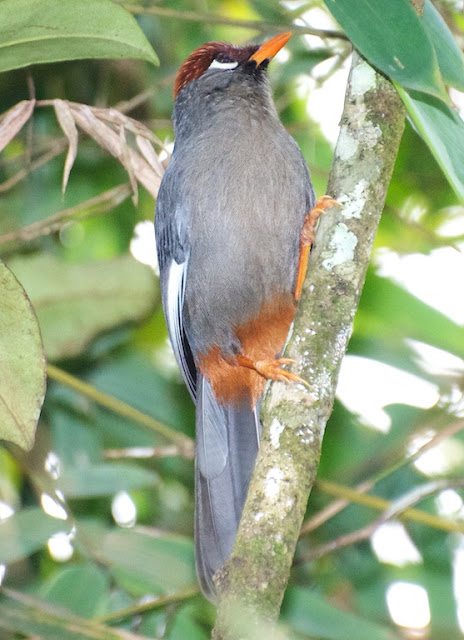
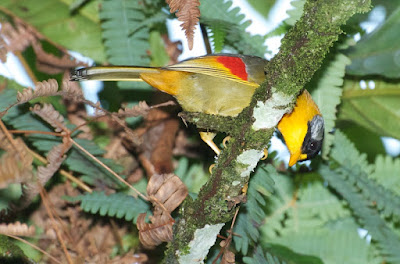









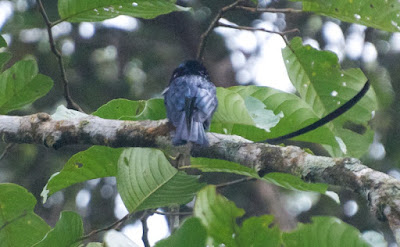
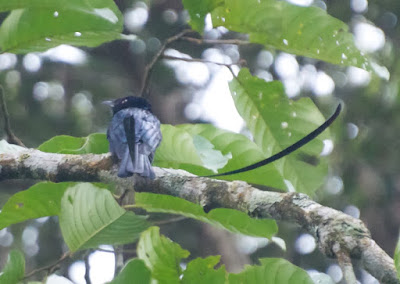
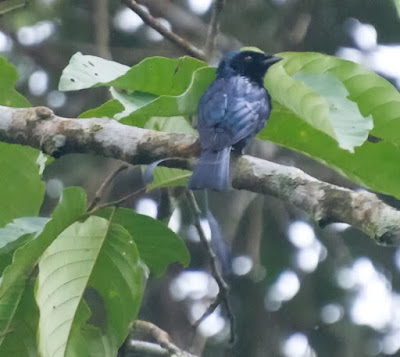


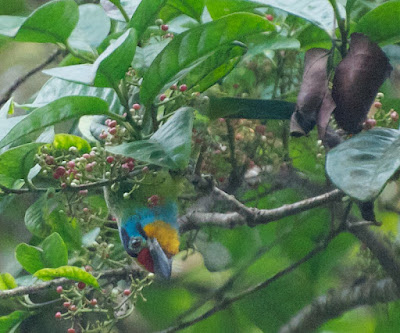










No comments:
Post a Comment